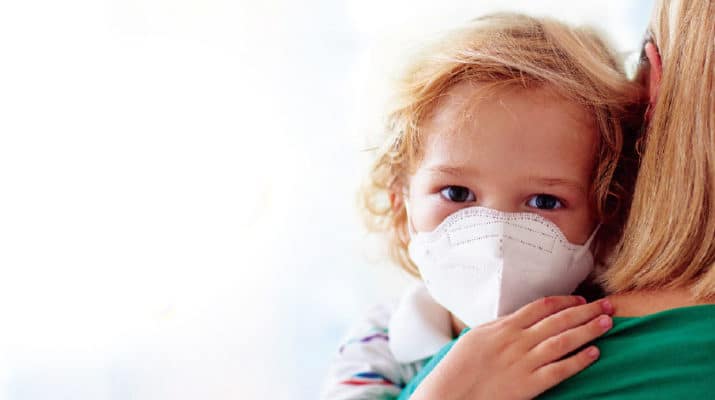By Barbara Pierce
Young children get sick. It’s that simple.
They’re more vulnerable to illness because their immune systems are underdeveloped. Plus, conditions in daycare and schools are ripe for the spread of germs.
Physician William Fredette described the most common child-hood illnesses and how to manage each. Fredette is co-director of Bassett Healthcare Network’s School-Based Health program and senior attending physician at FoxCare Pediatrics, Oneonta.
1 — Common cold

“Though all these illnesses vie for number one, probably the common cold is top on the list,” said Fredette. “Parents say to me: ‘He’s been sick all winter!’ The typical child gets six to eight colds in the winter; each lasts about 10 days. The cold is bad for about four days, then better for four to five.
Symptoms include runny nose, cough, sore throat and fever, said Fredette.
“There’s not much you can do. The key is to keep the child comfortable and keep him drinking. Give him plenty of fluids; he won’t want to eat much. He should pee at least three times during a 24-hour period; if he does that, he’s OK,” he added.
“Treat the child, not the fever. Make him comfortable. Fever is the body’s way of getting rid of the virus. If the fever lasts longer than 72 hours, bring him to his health care professional,” he said. “A fever of up to 101 is OK. If it gets up to 102-103, he’ll feel miserable. Give him Tylenol [acetaminophen] or ibuprofen. We don’t recommend alternating between Tylenol and ibuprofen. It doesn’t help and can lead to problems. Pick one or the other and use it.”
If your child is younger than 6, don’t use over-the-counter medications, as they have potentially serious side effects, recommended Fredette. Use a spoonful of honey to relieve the symptoms.
See your doctor if the fever lasts longer than 72 hours or if the child has difficulty breathing, if his breath is fast and shallow. Babies flare their nostrils if they’re having trouble breathing or make a little grunting noise at the end of every breath; this means they’re having difficulty breathing. Even if it’s the middle of the night, bring the child to the ER, Fredette advised.
“The number one thing to limit colds: Make sure everybody is washing their hands!” he added.
2 — Strep Throat
It is common in school-aged children, said Fredette. Kids younger than 3 rarely get it. Symptoms include sore throat that comes on suddenly, difficulty swallowing, fever, headache and stomach pain; there is no running nose.
“It will be uncomfortable for your child, but you don’t need to drop everything to take him to ER,” he said. “We have a 10-day window to treat the symptoms. If you think your child has strep throat, wait until morning to take him to the ER or you’ll spend the night there while they treat all the serious things first. Just keep him comfortable overnight and call your doctor the next day.”
3 — Stomach Bug
“We’re seeing a lot now,” said Fredette. In general, symptoms include nausea, vomiting, stomach cramps, stomach pain, loss of appetite, diarrhea.
To treat the child, hydration is important; have him take a sip every 20 minutes or so. If he urinates at least three times in 24 hours, he’s OK. If he has diarrhea, don’t give him dairy or fruit juice. Give him water, Pedialyte, Gatorade or a Popsicle to suck, suggested Fredette. If you give him milk or fruit juice, the bad bacteria will have a feast, making the illness last longer.
Don’t give him Pepto Bismol, he added. “In children, we want diarrhea to flush the virus out. If you stop the diarrhea, it could prolong the illness. Diarrhea means lots of loose stools — six to eight a day. It’s cleaning out the virus.”
Bring him in to your doctor if he can’t keep anything down, even fluids.
4 — Viral rash
This is another common illness in children,” said Fredette. Any viruses can cause a rash in children. Some have a clear cause, like chickenpox, measles, roseola or fifth disease. But for many, doctors may not know the cause.
Symptoms depend on the type of virus and your child’s skin. There may be redness, bumps, or raised areas. Some rashes may be itchy. Other symptoms may include fever, headache, runny nose, sore throat, belly pain, diarrhea.
It’s completely benign. When the virus goes away, the rash goes away. If the rash is itchy, apply a cool, wet cloth for 15-30 minutes several times a day. Urge your child to not scratch the rash as scratching could cause a skin infection.
5 — Ear Infection
“Ear infections are the bane of many parents,” Fredette continued. “It’s the most common reason they bring the child to the ER. However, it isn’t a reason to go to the ER. To treat, give the child Tylenol or ibuprofen and call your doctor in the morning.”

